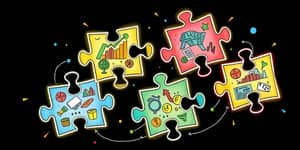
Life rarely unfolds exactly as we plan. New roles, unexpected challenges, and shifting priorities demand that we constantly revisit our approach to personal and professional goals. Failing to adjust can lead to stress, stagnation, and missed opportunities. By viewing change as an invitation rather than a threat, you can navigate transitions with confidence and purpose.
Whether you’re facing a career pivot, a move across the country, starting a family, or coping with health challenges, developing an adaptive mindset and practical framework will empower you to thrive in evolving circumstances.
Change is the one constant we all share. From daily adjustments to life-altering shifts, our ability to adapt determines our resilience and overall well-being. Research shows that individuals with embrace new and unexpected opportunities report 65% less stress during major transitions.
Instead of resisting change, cultivate a perspective that views every detour as a chance for growth. This proactive stance not only reduces anxiety but also opens doors to new experiences and relationships.
Certain life events often demand a complete overhaul of our strategies. By identifying these turning points in advance, you can prepare and respond more effectively.
Recognizing these shifts early allows you to design a strategy that aligns with new responsibilities and aspirations.
Adaptation is grounded in psychological theories and robust data. The field of Adaptation Theory outlines a sequence of actions that lead to effective change management:
1. Identify new challenges clearly.
2. Develop coping strategies such as emotional regulation and problem-solving.
3. Reframe situations to find positive meaning.
4. Reflect on lessons learned to strengthen future adaptations.
Studies reveal that 62.7% of people perceive significant change as challenging yet ultimately achievable. Those who commit to a systematic adaptation plan experience higher life satisfaction and performance.
Structured models can guide your journey from uncertainty to mastery. One versatile approach is the ADKAR model, widely used in organizational change but equally powerful in personal life transitions.
In addition to ADKAR, aligning your decisions with evolving core values is critical. As life circumstances shift, what was once a priority may fade in importance. Regularly revisit your values to ensure your strategy remains relevant.
By integrating both models, you can build a robust approach that addresses the emotional, cognitive, and practical aspects of change.
Translating theory into action involves clear, actionable steps tailored to each life transition. Follow this roadmap to transform challenges into opportunities:
For example, if you’re launching a new career path, identify transferable skills, expand your network, and consider bridge roles or volunteer opportunities to build credibility. New parents might preserve aspects of their pre-parent identity, set realistic expectations, and join peer support networks to share the journey.
Adapting once is not enough; life will shift again. Embrace a mindset of continuous improvement by:
align your decisions with core values and use feedback loops to refine your approach. Reflect on both successes and setbacks to glean insights that inform future adaptations.
Engaging in regular check-ins—monthly or quarterly—helps you stay attuned to emerging challenges and opportunities. Celebrate milestones to reinforce progress and maintain motivation.
Adapting your strategy as life changes is not a one-time project but a lifelong journey. By combining psychological principles, structured frameworks, and practical steps, you can transform uncertainty into clarity and challenge into opportunity.
Remember that every transition—whether chosen or unexpected—carries the potential for profound growth. With deliberate effort and an adaptive mindset, you will not only survive change but thrive through it. Commit to this ongoing process, and you will find yourself ready for whatever life brings next.
References













